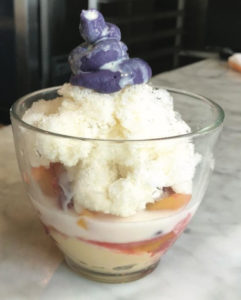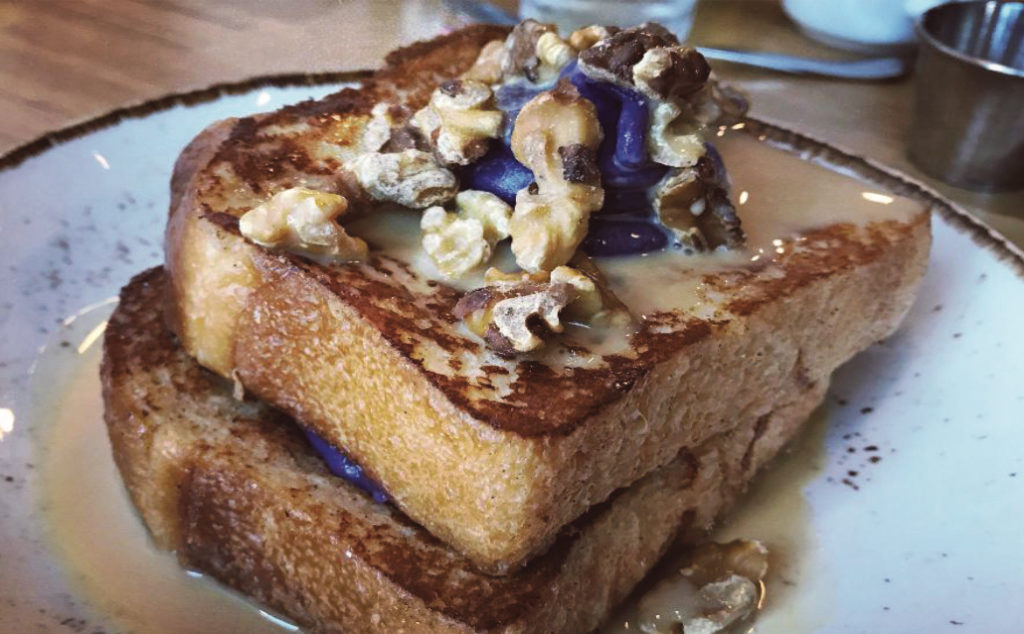
Behind two highly-acclaimed filipino restaurants
How exactly did a former dishwasher rise from the ranks to become a successful chef and restaurateur who now owns two highly-acclaimed Filipino restaurants in Philadelphia?
We first met chef Lou at the James Beard House when he and a group of other Filipino chefs cooked regional Filipino cuisine around January last year. A few months later, a bunch of us went to Perla, his first restaurant (which he opened in 2016 and named after his mom) where we ate our hearts out.

Zagat noticed Boquila’s chops in the kitchen and named him as one of “17 Under-the-Radar Chefs You Need to Know around the U.S.” in 2017. They recognized him for his efforts in “familiarizing Philadelphians with Filipino fare”, along with his refined takes on Filipino classics like sinangag (his version is made with jasmine rice, bone marrow and garlic scapes) and adobo (duck breast).

Early this summer, we drove all the way to City of Brotherly Love to try his newest outpost, Sarvida. Our decision for the road trip was finalized after seeing Bon Appétit Magazine’s spread about the restaurant’s halo-halo.
Maybe the feature was meant to redeem the magazine from the halo-halo debacle of 2016 where they came under fire from Pinoy netizens for coming up with their version in a piece called “Ode to Halo-Halo”.
A Huffington Post article called their reimagined version as “more of a whitewashing than it is an homage.”
“If a popular American food magazine is going to pay homage to an ethnic dish, they should try their best to mimic the flavors of the original, instead of throwing popcorn and gummy bears into a bowl and calling it a day,” the scathing article criticized.
So this time around, they made sure to do it right.
“A writer from Bon Appétit came in for dinner one night without us knowing. She had the halo-halo and really enjoyed it!” shared Boquila.
They reached out a week or two later and told the restaurant that they wanted to feature it for their August issue. They came in for a photo should and Chef Lou did a phone interview.
We asked him the difference between the halo-halo they serve at Sarvida compared with the usual Filipino fare.
“For the most part, it’s traditional. I wanted it to be the same version I grew up eating. We just try to prepare as much of it as possible ourselves, like the mung beans, jackfruit and ube,” he shared.
The magazine deconstructed Sarvida’s halo-halo and put it on a whole page, showing the different layers of the well-loved Filipino dessert.
At the bottom of the glass is the first layer, the leche flan. Chef Lou gave a good reason why, especially since it is usually placed as a topping.
“My favorite part of the halo-halo growing up was the flan! It’s such a treat to get that bite with the flan. I wanted to make sure there’s more than enough flan in our version,” he shared.
Indeed, there was more than just a square inch of the delicious caramelized egg custard.
“The cup of multi-layered goodness delivers an entire dessert menu worth of textures and flavors: custardy, chewy, icy, milky, creamy, and starchy-sweet,” the magazine feature read.
After the flan comes the add-ins, a wonderful mix of jackfruit and adzuki beans poached in brown sugar, star anise and cardamom. He also added some store-bought coconut jelly and palm nuts.
Next comes the ice, milk (he mixes evaporated and condensed milk) and everything is topped off with a dollop of roasted, pureed ube.
Opening Sarvida
Chef Lou’s parents, Felicisimo and Perla Boquila were both from Leyte. His father passed away before he turned two so he has very few memories of and with him. The family moved to Philadelphia when he was eight years old and his mom Perla raised him all by herself and inculcated in him the value of hard work.
His two restaurants now both honor his mother. Sarvida was her maiden name.
“She didn’t have much time to cook since she had to raise five kids and make a living but I do remember when she did cook it was a treat! At every party gathering she would make pancit and suman. Those were her specialties for occasions. But at home anything she made was amazing. Binagoongan was one of my favorites,” Boquila said.
His version of binagoongan for Sarvida uses pig tails instead of pork belly. He tops it with thin strips of green mango to complement the shrimp paste.
After the success of Perla, Chef Lou opened Sarvida last September.

They serve traditional breakfast fare like silogs during brunch on Sundays. From Wednesday to Saturday nights, they do regular dinner service.
The menu at Sarvida is more traditional and the dishes are meant to be shared with the whole table, very similar to a typical dinner at a Filipino household. They have dishes like pancit, pinakbet, bbq sticks, inasal and lechon pork belly.
Balancing Act
Chef Lou’s current life is a balancing act of sorts. He has a new baby while taking care of a relatively new restaurant and making sure that the first one is still thriving. There is also a delicate balance between being a chef and a restaurateur.
“It’s difficult but not impossible,” he shared. “I definitely lean on my team a lot now with the baby and they deserve a lot of credit. I couldn’t do it without them.”
“The hardest thing sometimes is the guilt. When I’m at work I feel like I should be with the baby more and when I’m with the baby I feel like I should be at work. There’s never a boring day I can tell you that much!”
Armed with his experience when he opened Perla, Boquila ventured into something more ambitious, a bigger space where he could accommodate more diners.
Asked about the biggest lesson he learned when he opened Perla that he was able to apply with Sarvida, he quipped, “Patience.”
“I knew things wouldn’t always be on time as far as construction, permits and staffing. That’s how the whole restaurant industry is. Nothing usually goes exactly as planned but you have to be prepared for anything,” he shared.
Chef Lou believes that the biggest challenge the whole restaurant industry is facing right now is staffing, the same sentiment shared by Tsismis NYC chef Jappy Afzelius when we spoke with him a few months ago.
“It’s hard to find good people,” Boquila said. “So when you do, you have to treat them well and show them how much you appreciate them.”

Sowing the Seeds
Aside from the glowing Bon Appétit feature, a local Philly publication has also noticed Sarvida. In its “Best of Philadelphia 2019 issue”, Philadelphia Magazine named it as “Best New BYOB Restaurant for 2019”.
“I would have never imagined a Filipino restaurant getting that award when I started cooking. It’s really amazing where our cuisine is going,” he said.
Boquila, who has been cooking for almost 15 years now, rose from the ranks. His first job in the food industry was as a dishwasher, where he worked his way up to becoming a line cook and eventually helping run the kitchen. Then he went to culinary school to further hone his craft.
We had to ask, as the chef/owner of two of Philadelphia’s thriving Filipino restaurants, what is Chef Lou’s ultimate dream?
“I think my dream is happening right now. When I first opened Perla I always said that Filipino food wouldn’t last if only one person is doing it, that is why we have to help push and inspire others to do it,” he said.
Reminiscing a not so distant past, he also remembered “that ‘crab mentality’ was very popular amongst our group back then but now I think we realize how much of a force we can be when we work together.”
He also hosts other Filipino pop ups at Sarvida to showcase how many different versions of Filipino food there are and he believes that food is like telling a story and every cook/chef has their version of it.
In the pipeline is a more long term dream for this entrepreneurial chef.
“Personally, I would like to open a Filipino bar in Philadelphia. I already have a name for it! I think it would be awesome to have a place where we can gather and have a drink and relax,” he shared.
There’s no rush though, since the past few years have been crazy busy for them.
“Just in the time Perla opened I got married, opened Sarvida and had a baby. I think it’s time to lay low and watch the young kids do their thing for a while,” he said.







